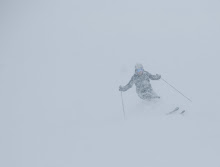
A few years ago, I made list of things that I love. When I think daily of what has been pleasurable for me, I do not turn to this list. I choose what is true for that particular day. On Tuesday of this week, there was a full moon. I looked out at it throughout the night and then later, I learned that the full moon in September is a harvest holiday in Korea, similar to Thanksgiving in Canada or the United States. This, and other things, made Tuesday special. Today, I was bouldering at the gym and watched a birthday party of young children. Some climbed naturally, using their free leg to flag and provide balance. Others were fine until they got to the top of the wall and then -oops- "how do I get down?" The staff were good at telling them how to position their feet in order to be lowered comfortably. I smiled as I watched.
A holiday in Korea and kids climbing are not enduring pleasures for me, but they made me appreciate the day and smile. The list of things that I love is enduring and comprised of small moments such as the smell of peppers sauteeing, afternoon sunlight on my back, the sounds of water - trickling, splashing, running, thundering, being alone in the car with good music playing, and the smell of trees. And, yes, skiing, looking at mountains, and catching a wave are on the original list. I have added to it over the years and looking at the list just now made me realize how far I have come in turning my fears into fun. My list just gets longer and longer.




